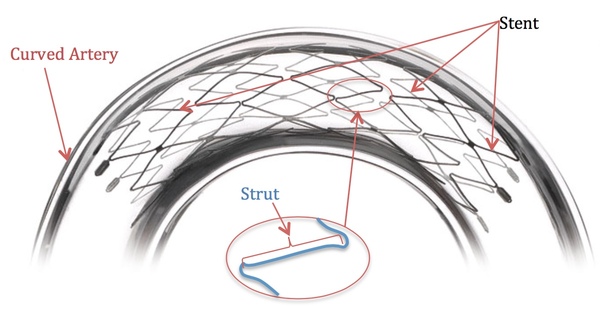Comparing the Effect of Stent Geometry on Blood Flow Rate of Curved Coronary Artery Stenosis
(1) Aventura Waterways K-8 Center, Miami, Florida, (2) Nova Southeastern University, College of Engineering and Computing, Ft. Lauderdale, Florida
https://doi.org/10.59720/15-047
One of the world’s leading causes of death is Coronary Heart Disease (CHD); it has been implicated in about 12% of all deaths globally. Plaque accumulation within the heart’s arteries causes CHD and leads to fatal complications including heart attack and stroke. Currently, the treatment for moderate plaque levels in CHD is placing a stent to hold plaque back from interfering with the blood flow and to deliver preventative drug treatment. Stents are constructed from longitudinal segments called struts, commonly having 8, 10, or 12 struts. Stent struts can change the amount of surface area available for drug delivery and also affect the blood flow rate. Recently, to maximize surface area, researchers have considered stents having a square instead of round strut cross-section. While the new square cross-section provides more surface area, its shape does not appear to be as efficient for the blood flow rate. However, limited investigations have been done on the relationship between the number of struts and their cross-section geometry on the blood flow rate. In this study, we tested the effect of strut design on simulated blood flow rate in a designed artificial heart. The results of this study showed that the 12-strut round cross-section had a higher blood flow rate than the other stent geometries. More research is still needed to investigate additional stent geometries to ensure both the added surface for the restenosis-prevention drug and a maximum blood flow rate are achieved simultaneously.
This article has been tagged with: